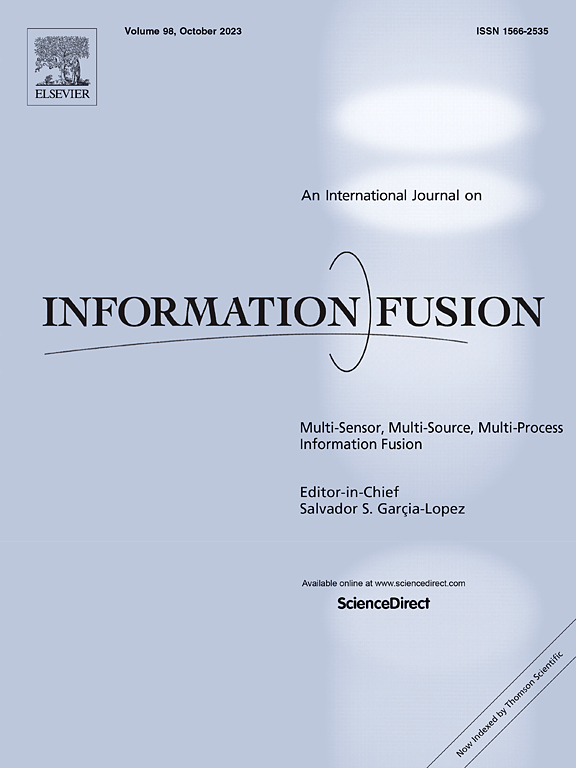基于动态三向决策模型和后悔理论的区间值信息融合
IF 15.5
1区 计算机科学
Q1 COMPUTER SCIENCE, ARTIFICIAL INTELLIGENCE
引用次数: 0
摘要
在实际决策领域中,传统的静态方法不足以处理这种动态复杂性,从而突出了跨多个时间段聚合信息的挑战。本文通过引入动态区间模糊信息与后悔理论相结合的动态三向决策模型来解决这一问题,强调了信息融合在现代决策中的关键作用。首先,提出了一种自适应时间权重方法,以考虑不同时期信息的不同重要性,反映现实世界场景中数据的演变性质。其次,本文采用模糊c均值算法和嵌入度来描述对象,这种描述构成了估计条件概率的基础,提供了比传统模型更细致入微的理解。此外,引入重叠函数的区间加性生成对,通过融合信息颗粒进一步拓宽了模型的应用范围。同时,通过考虑嵌入性和偏差的多目标规划模型确定属性权重向量,这是反映不同属性相对重要性的必要条件。最后,该模型旨在通过纳入心理行为,使效用最大化,与人类决策过程的现实保持一致。通过将其应用于城市空气质量评估问题,证明了其实用性、合理性和优越性,对比分析和实验分析验证了该模型在处理复杂的、现实世界的决策挑战方面的有效性。总之,本文提出了一个动态决策模型,强调了信息融合在处理跨时间段聚合数据中的重要性,增强了以人为中心的决策过程。本文章由计算机程序翻译,如有差异,请以英文原文为准。
Interval-valued information fusing via dynamic three-way decision model and regret theory
In the realm of practical decision-making, the challenge of aggregating information across multiple time periods is highlighted by the inadequacy of traditional, static methods to handle such dynamic complexities. This paper addresses this challenge by introducing a dynamic three-way decision model that integrates dynamic interval-valued fuzzy information with regret theory, emphasizing the critical role of information fusion in modern decision-making. First, an adaptive time-weight method is proposed to take into account for the varying importance of information over different periods, reflecting the evolving nature of data in real-world scenarios. Second, the paper employs a fuzzy c-means algorithm and an embedding degree to describe objects, and this description forms the basis for estimating conditional probabilities, which provides a more nuanced understanding than traditional models. Besides, the introduction of an interval additive generator pair of overlap functions further broadens the model’s application scope by fusing information grains. Meanwhile, the attribute-weight vector is determined through a multi-objective programming model, considering both embeddedness and deviation, which is essential for reflecting the relative importance of different attributes. Finally, the model aims to maximize utility by incorporating psychological behaviors, aligning with the realities of human decision-making processes. Its practicality, rationality, and superiority are demonstrated through its application to city air quality assessment problems, where comparative and experimental analyses verify the model’s effectiveness in handling complex, real-world decision-making challenges. In summary, this paper presents a dynamic decision-making model that underscores the importance of information fusion in addressing aggregated data across time periods, enhancing the human-centric decision-making process.
求助全文
通过发布文献求助,成功后即可免费获取论文全文。
去求助
来源期刊

Information Fusion
工程技术-计算机:理论方法
CiteScore
33.20
自引率
4.30%
发文量
161
审稿时长
7.9 months
期刊介绍:
Information Fusion serves as a central platform for showcasing advancements in multi-sensor, multi-source, multi-process information fusion, fostering collaboration among diverse disciplines driving its progress. It is the leading outlet for sharing research and development in this field, focusing on architectures, algorithms, and applications. Papers dealing with fundamental theoretical analyses as well as those demonstrating their application to real-world problems will be welcome.
 求助内容:
求助内容: 应助结果提醒方式:
应助结果提醒方式:


